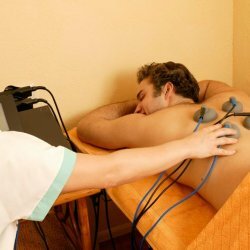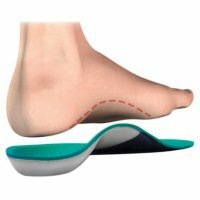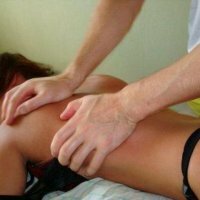Treatment methods and types of electrotherapy
 Physiotherapeutic procedures are an integral part of complex treatment of diseases of various nature and degree, including chronic, promote rapid recovery, eliminate pain and prevent the occurrence of relapses of the disease. Physiotherapy is also widely used during the rehabilitation period.
Physiotherapeutic procedures are an integral part of complex treatment of diseases of various nature and degree, including chronic, promote rapid recovery, eliminate pain and prevent the occurrence of relapses of the disease. Physiotherapy is also widely used during the rehabilitation period.
Recently, most often, patients are prescribed treatment and preventive procedures, which use the therapeutic power of electric current - electrophoresis, electrosleep, darsonvalization, galvanization, UHF effect.
Electrotherapy techniques
Electrotherapy( electrotherapy) - is one of the effective forms of physiotherapy treatment, which is based on the effect of electric current and electromagnetic fields on the human body.
The therapeutic power of current was discovered in the early 20th century, thanks to scientific research in the field of medicine. The founders of electrotherapy are the great scientists Luigi Galvani, Duchenne, D'Arsonval, Faraday. This method is based on the effect of electrical pulses, magnetic and electromagnetic fields in certain doses. Electricity is one of the properties of any living organism, so the use of electric current is not alien to tissues and organs.
This technique is used in medical practice for the treatment of neuroses, diseases of the musculoskeletal system, cardiovascular, urinary system, in the treatment of respiratory diseases, elimination of inflammatory processes in tissues, in dentistry, as well as in cosmetology. With the help of electrotherapy, it is possible to locally administer medications that act directly on the inflammatory focus or the site of tissue damage.
Electrotherapy contributes to the reduction and elimination of pain symptoms, muscle relaxation, improvement of microcirculation of blood and lymph, activation of the body's defense forces, reduction in the level of swelling of tissues, improvement of metabolic processes.
The methods used in electrotherapy are different and based on the use of a different current( variable or constant), frequency, force and voltage. Treatment and preventive procedures are selected individually for each patient. Next, the most common procedures that relate to electrotherapy will be described.
Some types of electrotherapy are contraindicated in epilepsy, active form of tuberculosis, neoplasms in the tissues of organs, pregnancy, severe heart pathologies, hepatic or renal insufficiency, fractures of bones and with individual intolerance of procedures.
Electrosleep
This electrotherapy technique is based on the impact of low-frequency pulsed current, force and voltage directly on the nervous system, resulting in slowing and inhibition of all processes in nerve cells, which in turn causes sleep of varying depth and duration. Recently, this technique has found wide application in the treatment of various diseases.
This method is based on the reflex, monotonous and rhythmic effect of electric current on the brain, as a result of which a special psychophysiological state develops in the body. After several electrosleep procedures, the activity of the nervous system improves markedly, the blood supply of the brain increases, the general emotional state of the person improves. Also, the electrosleep helps reduce the pain threshold( anesthetic effect) and reduces the inflammatory processes in the tissues.
Most often, electrosleep is used in the treatment of chronic forms of ischemic disease, hypertension, hypotension, traumatic cerebropathy, psychoneurological disorders, peptic ulcer disease, rheumatism, and this procedure is prescribed for patients who underwent severe operations or a heart attack.
Contraindications: circulatory insufficiency, arachnoiditis, hysteria, inflammatory eye diseases, individual intolerance to electric current, the presence of metal fragments in the tissues of the organs( brain, eyes, hearing organs).
Electrophoresis
The basis of electrophoresis is the combination of the effects of galvanic current and a small number of drugs on specific areas of the body. The medicinal substance is applied to the surface of the electrodes and, when interacting with the electromagnetic field, it penetrates the skin, mucous membranes, blood stream or tissue cells.
Electric current several times strengthens the active action and effectiveness of drugs, increasing the sensitivity of tissues and cells to their effects, while reducing the number of side effects. Skin areas, to which the electrodes are attached, must be degreased, clean, without damage. Immediately before the procedure, they are moistened with a special solution and only then electrodes are placed, which if necessary are fixed with elastic bandages. During this procedure, the pain effect is completely absent, and patients feel only a slight tingling. The duration of the procedure is from 10 to 30 minutes. The maximum effect is felt after 10-15 procedures.
Electrophoresis has a relaxing, analgesic, anti-inflammatory, vasodilating effect.
Basic indications for electrophoresis:
- Plexitis, neurotic diseases, radiculitis;
- Dental pathologies and diseases;
- Chronic ischemic disease, hypertension, atherosclerotic lesions of the vascular system;
- Gynecological pathology;
- Chronic gastritis, peptic ulcer;
- Diseases of the musculoskeletal system.
DiaDynametry, DDT method
This method is based on the individual application of low-frequency single-phase dynamic current both for preventive and therapeutic purposes. As a rule, DDT is used to relieve symptoms during long-term treatment of the disease or in case of an incurable disease.
This method also significantly improves the general physiological processes in the body and allows to stimulate metabolic processes in tissues, and also alleviates pain, relieves spasms and eliminates inflammatory processes. In addition, dyadinemetry stimulates the secretory function of endocrine glands and normalizes the work of the entire endocrine system and facilitates the entry of nutritional components to tissue cells.
Most often, DDT is prescribed to patients suffering from arthritis, neuroses, gynecological pathologies, Bechterew's disease, radiculitis, bruises and adhesions of the abdominal cavity.
The duration of the session does not exceed 10 minutes and can include from 5 to 10 sessions.
Ultra-shortwave therapy, UHF-therapy
The essence of this technique is based on the interaction of high-frequency electromagnetic field on the body with the help of special condenser plates. In the process of this procedure, the tissues of the bronchial walls considerably relax, the secretory function of the bronchial glands decreases, the motility of the gastrointestinal tract and bile secretion increase.
UHF therapy is prescribed for otitis, trophic ulcers, angina, bronchial disease, furunculosis, traumatic injuries of the musculoskeletal system, arthrosis.
Darsonvalization of
This method was developed by the French scientist D'Arsonval, based on the action of high-pulse and high-frequency electrodes on individual parts of the patient's body. It should be noted that this technique has been widely used in cosmetology, since after a few sessions the appearance and general state of the skin is significantly improved.
Darsonvalization is recommended for varicose veins, intercostal neuralgia, trophic and heavily healing wounds, Raynaud's disease, psoriasis, dermatitis, gingivitis, acne, angina, neurodermatitis.



